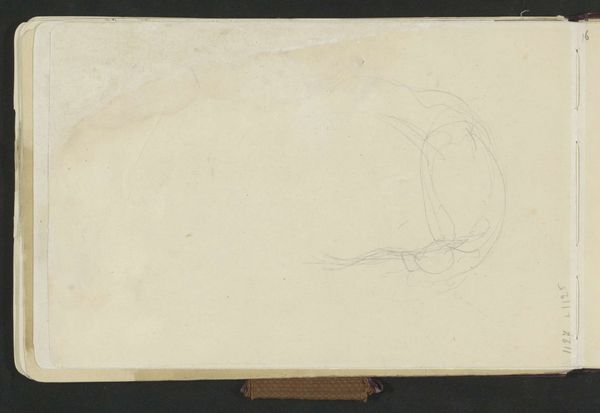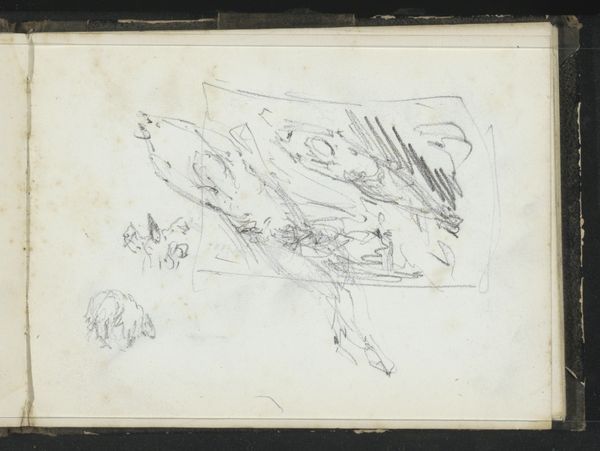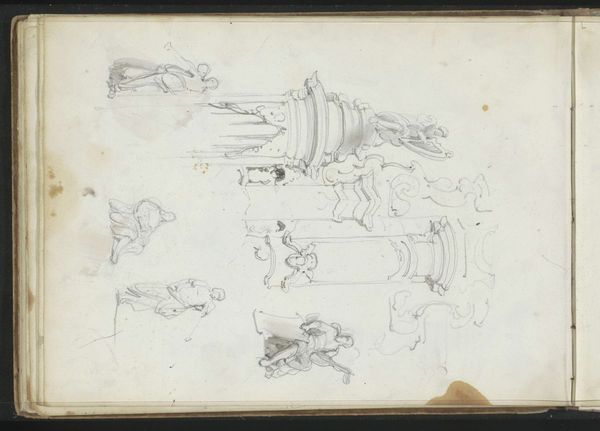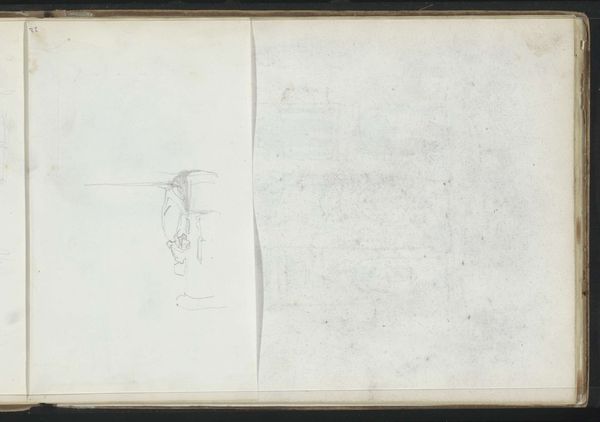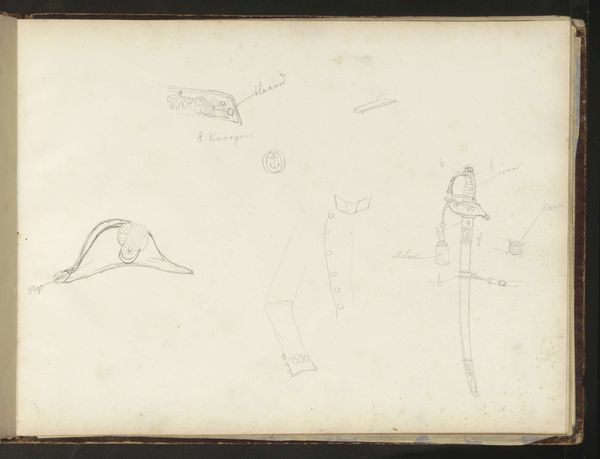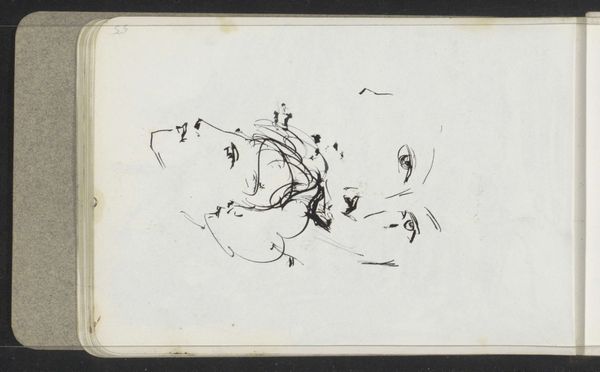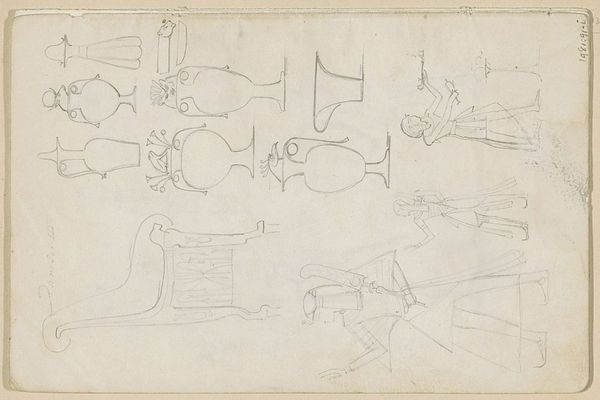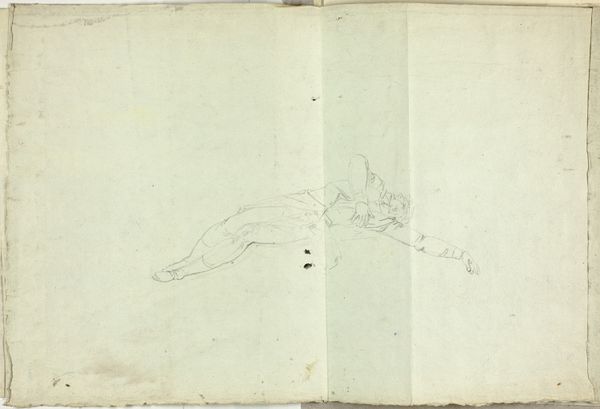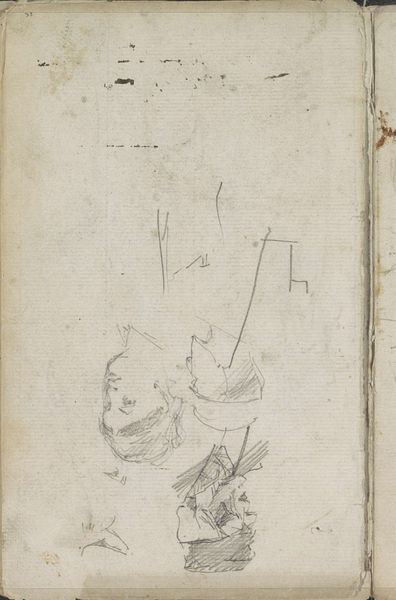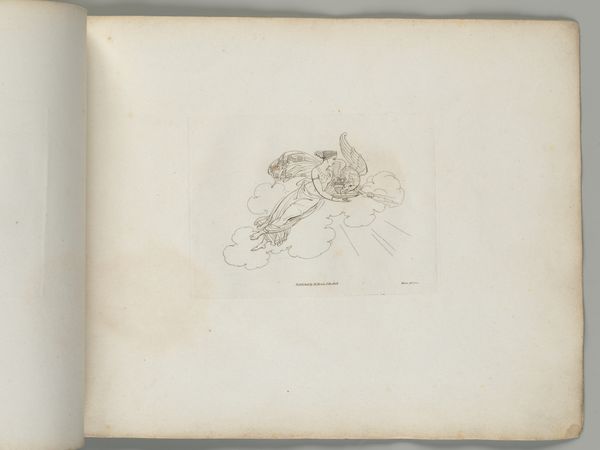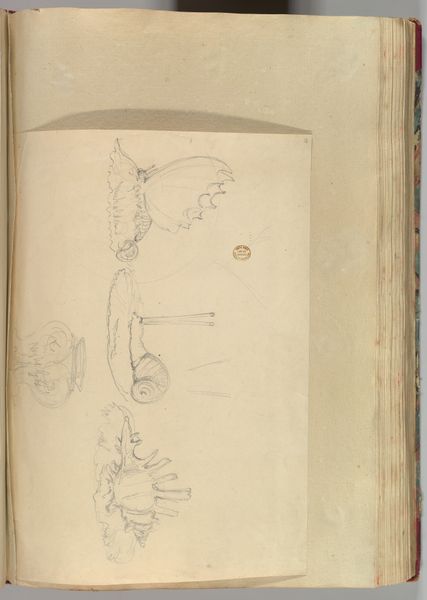
drawing, paper, pencil
#
drawing
#
imaginative character sketch
#
toned paper
#
quirky sketch
#
incomplete sketchy
#
paper
#
personal sketchbook
#
ink drawing experimentation
#
geometric
#
pen-ink sketch
#
pencil
#
sketchbook drawing
#
watercolour illustration
#
sketchbook art
Copyright: Rijks Museum: Open Domain
Curator: Welcome. Here we have Reinier Craeyvanger’s "Stalen helm," a drawing dating from 1822 to 1880, housed here at the Rijksmuseum. Editor: It has a light, almost ethereal quality. The delicate pencil work against the toned paper makes the metallic helmet look surprisingly fragile, doesn't it? Curator: Indeed. Consider that helmets, especially elaborate ones like this, weren't just practical. They were potent symbols of power, status, and national identity. In the Netherlands during this period, the military held significant sway in defining civic pride after the Napoleonic era. Editor: The way the light catches certain points—that curve of the crest, the floral rosette—draws the eye and highlights the contrast. Did Craeyvanger make preliminary sketches or did he intend on finishing this illustration? It feels almost dreamlike, with those suggestive lines trailing off. Curator: That’s part of its appeal! Craeyvanger was a master draughtsman. While seemingly incomplete, it demonstrates his process of visualization and the use of suggestion rather than strict depiction. It reveals the layers of artistry beyond just reproduction. Editor: Do you think the lack of strong delineation impacts its symbolism? Does the sketch form, compared to a more polished work, invite a sense of ambiguity regarding military might and its impact on the commoner during those political struggles? Curator: Absolutely. The incomplete nature challenges heroic representation and becomes a commentary on the ever-shifting socio-political sphere of the time. It makes the viewer consider the man inside the helmet, whose purpose is to serve. Editor: It's fascinating how an unfinished sketch opens avenues for reflection that a complete artwork might not. This certainly encourages a deep consideration of symbolic weight and technique. Curator: Indeed, this artwork reminds us how artistic intentions, historical contexts, and art’s fundamental formal elements intersect.
Comments
No comments
Be the first to comment and join the conversation on the ultimate creative platform.
